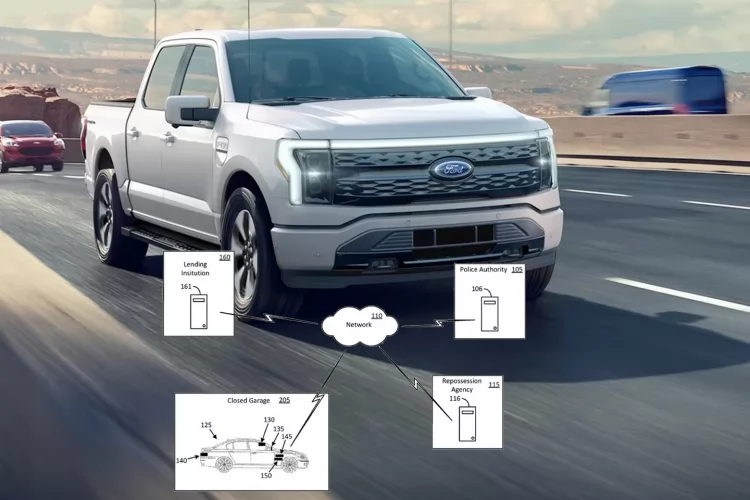Sustainability has become a key focus in the automotive industry, reshaping how you view car interiors. As consumer awareness grows, the shift from traditional leather seats to sustainable fabrics marks a significant change in your driving experience. You now have the opportunity to choose materials that not only enhance aesthetic appeal but also minimize environmental impact. This blog post will guide you through the evolution of car interiors, helping you understand how your preferences align with eco-friendly innovations in vehicle design.
Key Takeaways:
- Shift towards Sustainability: Car manufacturers are increasingly adopting sustainable fabrics, moving away from traditional leather to eco-friendly alternatives.
- Technological Integration: Modern car interiors now showcase advanced technology, including infotainment systems and smart features that enhance user experience.
- Design Evolution: The aesthetic of car interiors has transitioned to a minimalist design approach, emphasizing functionality alongside stylish elements.
The Historical Context of Car Interiors
The evolution of car interiors is a fascinating journey through time, revealing how the needs, preferences, and technologies of society have influenced design. From the early days of motoring, where functionality ruled over aesthetics, to today’s emphasis on sustainability and comfort, the historical context is important for understanding the trajectory of car interiors.
Early Innovations in Car Interior Design
Any discussion about car interiors must begin with the early innovations that shaped them. In the late 19th and early 20th centuries, automotive pioneers focused on creating functional cabin spaces. These initial designs prioritized materials that could withstand the rigors of travel, such as wood, metal, and leather. As automobiles became more popular, manufacturers started experimenting with benched seating, rudimentary dashboards, and basic controls, paving the way for a more refined driving experience.
The Rise of Leather Seats
At the same time, a significant trend emerged: the rise of leather seats in car interiors. As automotive design evolved, leather became a popular choice not just for its durability but also for its luxurious appearance and feel. High-end manufacturers saw leather as a way to differentiate their products, and soon, leather seats became synonymous with luxury in the automotive world. This trend established a benchmark, where the quality of materials next to mechanical performance became an important factor in automobile sales.
Design choices around leather seats also focused heavily on comfort and aesthetic appeal. Manufacturers began to recognize that providing a comfortable driving experience could enhance the overall perception of the vehicle, leading to more complex seating designs that included adjustments for lumbar support and seat shape. This push for luxurious interiors effectively altered your expectations about what a car could offer, aligning with the growing influence of consumer preferences.
Influences of Luxury and Comfort
Between the 1920s and 1960s, the automotive industry underwent substantial changes, with a pronounced focus on luxury and comfort. Manufacturers began to understand that the interior of a car was equally important to buyers as its performance and price. This period saw the introduction of plush upholstery, advanced climate control systems, and high-quality materials that transformed the cabin into a personal oasis rather than just a means of transport. Your comfort became a priority, and car brands started to appeal to the modern consumer’s desire for an elevated driving experience.
As luxury became a driving force behind design innovations, automotive interiors evolved to include features like ambient lighting, high-end sound systems, and advanced infotainment options. These features created an environment that catered to comfort and enjoyment, influencing your perception of automobiles as more than just vehicles; they became extensions of your lifestyle.
Interiors that embrace luxury and comfort have evolved to revolutionize what you should expect inside a car. Each innovation highlights how these elements worked together to create a complete package, illustrating the importance of merging form and function in automotive design.
The Shift Towards Sustainability
While the automotive industry has long been associated with luxury and indulgence, it is now undergoing a significant transformation. You may have noticed that more manufacturers are prioritizing the use of sustainable materials in their car interiors. As environmental concerns rise, the demand for greener alternatives to traditional high-impact materials is becoming more prevalent. This shift not only aligns with global sustainability goals but also resonates with an increasingly eco-conscious consumer base. In this chapter, you’ll discover how the emergence of eco-friendly materials is reshaping car interiors, driven by innovation and consumer demand.
Emergence of Eco-Friendly Materials
About a decade ago, manufacturers began exploring alternatives to traditional leather and synthetic materials used in car upholstery. This progress has given birth to a range of eco-friendly materials such as recycled plastics, sustainably sourced textiles, and bio-based fabrics. Not only do these materials help reduce the environmental impact of automotive production, but they also reflect a commitment to social responsibility. You’ll find that major brands are increasingly integrating these sustainable choices into their vehicles, paving the way for a more environmentally friendly future in the automotive sector.
In addition, these materials often provide similar or superior qualities compared to their non-sustainable counterparts. For instance, fabrics woven from recycled PET bottles not only utilize waste products but also offer durability and comfort that match traditional fabrics. This means you can enjoy the aesthetic and tactile elements of car interiors without compromising your values.
Impact of Consumer Preferences
One of the most significant drivers of change in the automotive sector is consumer demand for sustainability. You are likely aware of the growing enthusiasm for environmentally responsible products, and this behavior has extended to your vehicle purchasing decisions. As consumers actively seek out brands that embody their values, automotive companies are adapting by integrating sustainability into their design philosophies.
Shift your focus to the consumer landscape; many buyers are now willing to pay a premium for vehicles that showcase their commitment to the environment. This strong preference for sustainable options is motivating manufacturers to innovate and produce eco-friendlier vehicles. As a result, the industry is experiencing a shift not just in materials but also in the overall approach to vehicle design and production.
Innovations in Sustainable Fabrics
Sustainability has sparked a wave of innovation in fabric technology for car interiors. You will find that manufacturers are exploring a variety of new materials made from agricultural byproducts, organic fibers, and even lab-created fabrics that have minimal environmental footprints. These innovations allow you to enjoy modern aesthetics combined with ecological mindfulness, reinforcing the idea that luxury and sustainability can coexist harmoniously.
And as the technology behind sustainable fabrics continues to advance, you can expect to see even more options in the future. Whether it’s upholstery made from hemp or seating constructed from recycled marine plastics, the possibilities are expanding. Transitions in automotive interior design demonstrate that sustainability is not just a trend; it’s becoming the norm, ensuring that your choices lead to a positive impact on the planet.
Current Trends in Car Interior Design
Despite the rich history of car interiors, modern designs are heavily influenced by changing lifestyles, consumer preferences, and an increasing focus on sustainability. As you explore today’s vehicle offerings, you will likely notice an emphasis on blending functionality with innovative materials and stylish aesthetics. The evolution of consumer expectations has led to designs that appeal to both the emotional and practical aspects of driving.
Minimalism and Modern Aesthetics
Across the automotive landscape, minimalism has emerged as a dominant trend. You may find that contemporary car interiors prioritize clean lines, uncluttered layouts, and a focus on vital features. This approach not only creates a sense of spaciousness but also enhances the overall driving experience by reducing distractions. With fewer buttons and analog controls, you can expect a streamlined look, where every element serves a purpose.
Additionally, modern aesthetics draw heavily from industries like tech and furniture design. As you step inside your vehicle, the use of high-quality materials—such as matte finishes and soft-touch surfaces—conveys a sense of luxury while maintaining a functional experience. You might appreciate how designs are also adeptly balancing simplicity with bold accents, allowing for a visually striking yet unpretentious space.
Technology Integration in Interiors
With the rise of connectivity, technology integration in car interiors is becoming increasingly sophisticated. Now, you can enjoy seamless access to various applications and infotainment systems, often controlled through your smartphone. This connectivity not only offers convenience, allowing you to manage music, navigation, and hands-free communication, but also ensures your driving experience is more engaging and enjoyable.
In fact, many new vehicles feature large touchscreen displays and advanced voice recognition capabilities, eliminating the need for extensive physical controls. As a driver, you benefit from smart features such as adaptive cruise control and lane-keeping assistance, further enhancing safety on the road. Moreover, as you interact with these systems, it’s important to remain aware of potential distractions and ensure your focus remains primarily on driving.
Customization and Personalization Options
Personalization is becoming a key aspect of car interior design. With many brands recognizing that one size does not fit all, you can now choose from a variety of upholstery materials, color schemes, and tech features tailored to your preferences. This not only makes your vehicle feel more like an extension of your personal style but also allows you to create an interior that meets your specific needs, whether it’s enhanced comfort or more versatile storage solutions.
Technology has played a significant role in elevating your ability to customize your vehicle’s interior. By allowing you to select and modify elements such as ambient lighting, seat configurations, and even climate controls, brands are enabling a more personalized driving experience than ever before. You can even expect options for smart tech that learns your habits and preferences, tailoring the atmosphere of your space to create a sense of belonging on every drive.
The Future of Car Interiors
For those who are passionate about automotive design, the future of car interiors promises to be as exciting as it is innovative. As new materials and technologies emerge, you can expect a shift towards more sustainable, multifunctional, and user-friendly spaces that adapt to your needs. The trends we see today, such as the integration of advanced technologies and eco-friendly materials, will evolve to redefine what of a car interior can be. You’ll be witnessing a new era of luxurious comfort intertwined with a conscientious approach to the environment.
Predictions for Material Advancements
Before delving into the future, it’s important to consider the paths from which we may draw our material inspiration. Innovations in sustainable fabrics, such as recycled plastics, bio-based composites, and even leather alternatives derived from mushrooms or other organic sources, are expected to become mainstream. These materials not only reduce the carbon footprint of production but also enhance the durability and aesthetics of your vehicle’s interior.
Furthermore, advancements in nanotechnology will likely improve the functionality of these materials, making them more resilient against wear and tear while offering innovative features like self-cleaning surfaces and heat-resistant properties. As you look to your future vehicles, anticipate interiors that are not only stylish and comfortable but also feature smart fabrics that can adapt to temperature or even smart textiles that respond to touch or sound.
The Role of Autonomous Vehicles
Above all, the rise of autonomous vehicles is set to revolutionize the very concept of car interiors. As you transition from active driving to a more relaxed role, the interior space will transform into a multifunctional environment. This evolution means reimagining seating arrangements, controlling entertainment systems, and even balancing work and leisure seamlessly within your car.
Also, the flexibility of autonomous vehicles introduces an immersive digital experience that could integrate augmented reality displays and enhanced sound systems to create a dynamic internal environment. Your vehicle could transform into a personal office, a gaming room, or a cozy lounge, allowing you to maximize every moment spent in transit. The essence of commuting will shift from a mere necessity into a curated experience that elevates your daily life.
Sustainability as a Design Imperative
For today’s environmentally conscious consumers, sustainability will continue to be a design imperative in the automotive industry. This growing awareness is reflected in your choices as manufacturers pivot towards producing interiors that not only look good but also feel right. Expect to see a dominance of eco-friendly materials that emit lower levels of volatile organic compounds (VOCs), resulting in healthier cabin atmospheres.
The commitment to sustainability will likely permeate every facet of car interior design, from the sourcing of materials to the manufacturing processes employed. This not only fosters a positive environmental impact but also resonates with your personal values, enabling you to make conscientious choices in your vehicle ownership.
FAQ
Q: What significant changes have occurred in car interiors over the past few decades?
A: Over the past few decades, car interiors have undergone a remarkable transformation. Initially dominated by luxurious materials like leather, modern interiors are increasingly incorporating sustainable fabrics and advanced technology. In the early 2000s, leather was the epitome of comfort and luxury, but environmental concerns and changing consumer preferences have prompted manufacturers to explore alternative materials. Innovations such as recycled plastics, organic textiles, and vegan leather options are now gaining popularity. Additionally, technology integration has seen significant advancements, with infotainment systems, touchscreens, and smart connectivity becoming commonplace in vehicle cabins.
Q: How do sustainable fabrics impact the automotive industry?
A: The shift towards sustainable fabrics in car interiors has a profound impact on the automotive industry. Firstly, it reflects a growing consumer demand for environmentally responsible products, pushing manufacturers to adopt eco-friendly materials and practices. This trend is not only beneficial for the environment, as it minimizes waste and reduces reliance on fossil fuels, but it also enhances brand image and attracts a wider customer base. Furthermore, the incorporation of sustainable materials can lead to innovative design solutions, bringing a fresh aesthetic to vehicle interiors while also supporting initiatives aimed at reducing the carbon footprint of production processes.
Q: What are some popular alternatives to traditional leather used in car interiors today?
A: There are several popular alternatives to traditional leather being utilized in car interiors today. Among these are synthetic leathers made from polyurethane or recycled materials, which provide a similar look and feel to leather without the environmental concerns associated with animal hides. Additionally, materials such as cork, organic cotton, and even pineapple leaves (known as Piñatex) are being integrated into vehicle design, offering unique textures and aesthetics while maintaining a lower environmental impact. Manufacturers are also exploring options like recycled PET (rPET) fabrics, which are made from recycled plastic bottles, providing durability and ease of maintenance while promoting circular economy principles.



